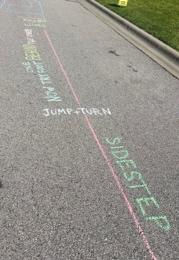Hitting and Biting Behaviors in Children with Autism
- All Care Therapies

- Mar 12, 2024
- 2 min read

Children with Autism Spectrum Disorder (ASD) often face various challenges that can manifest through different behaviors. Two common and concerning behaviors in some children with ASD are hitting and biting. In this blog post, we will explore why these behaviors occur in children with ASD and discuss effective occupational therapy and speech therapy interventions to address these behaviors.
Understanding the Behavior:
Hitting and biting behaviors in children with ASD can stem from several factors. Some children may struggle with expressing their needs or emotions, leading to frustration or sensory overload. Additionally, difficulties with social communication and understanding personal space can further contribute to these behaviors.
Occupational Therapy Interventions:
Occupational therapists (OTs) play a crucial role in supporting children with ASD. They can help identify the underlying causes of hitting and biting behaviors and develop strategies to manage and reduce them. OT interventions may include:
Sensory Integration Therapy: Through targeted sensory activities, OTs help children regulate their sensory responses and develop adaptive strategies to prevent sensory overload.
Visual supports: Implementing visual schedules and cues can enhance predictability, reduce anxiety, and promote understanding of appropriate behaviors in daily routines.
Alternative communication methods: OTs collaborate with speech therapists to introduce alternative communication methods (such as visual aids or sign language) to help children express their wants and needs more effectively, thus reducing frustrations.
Speech Therapy Interventions:
Speech therapists (STs) assist in addressing communication difficulties, which can contribute to hitting and biting behaviors in children with ASD. Some speech therapy interventions to consider are:
Augmentative and Alternative Communication (AAC): STs work with children to incorporate AAC systems, such as picture exchange communication systems, speech-generating devices, or sign language, to improve their ability to express themselves and reduce frustration.
Social Communication Training: STs focus on improving social skills, such as learning to take turns, perspective-taking, and understanding non-verbal cues. Enhancing these skills can lead to more appropriate ways of expressing needs and emotions.
While hitting and biting behaviors can be challenging to manage in children with ASD, effective interventions from occupational therapists and speech therapists can significantly help in understanding and addressing these behaviors. Collaborative efforts can lead to improved communication, sensory regulation, and enhanced social skills, enabling children with ASD to express themselves in more appropriate ways.
References:
Autism Speaks (2021). Challenging Behaviors Toolkit: A Guide to Resources on Behaviors that Challenge in Autism Spectrum Disorder. Retrieved from: https://www.autismspeaks.org/sites/default/files/docs/naat_challenging_behaviors_tool_kit.pdf
American Occupational Therapy Association (2021). Occupational Therapy and Autism. Retrieved from: https://www.aota.org/Conference-Events/Autism/OT%20and%20Autism.aspx
Boucher, Judith (2012). Research review: Structural language in autistic spectrum disorders - Characteristics and causes. Journal of Child Psychology and Psychiatry, 53(3), 219–233. doi:10.1111/j.1469-7610.2011.02446.x.)




This is such a clear and compassionate explanation of a very challenging topic. The focus on understanding the root causes of behaviors like hitting and biting, rather than just addressing the symptoms, is incredibly helpful for parents and caregivers. This principle of looking deeper to understand the 'why' behind a behavior is so fundamental. It highlights a journey of understanding that, for many, continues well into adulthood. Often, after learning about the spectrum for their children, many adults begin to re-evaluate their own lifelong experiences through this new lens. For those on that personal journey of discovery, finding a reliable starting point can be the biggest hurdle. A resource I've found to be particularly insightful is a comprehensive autism assessment…